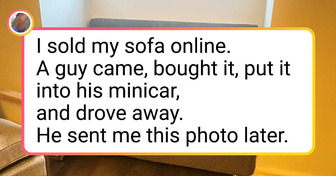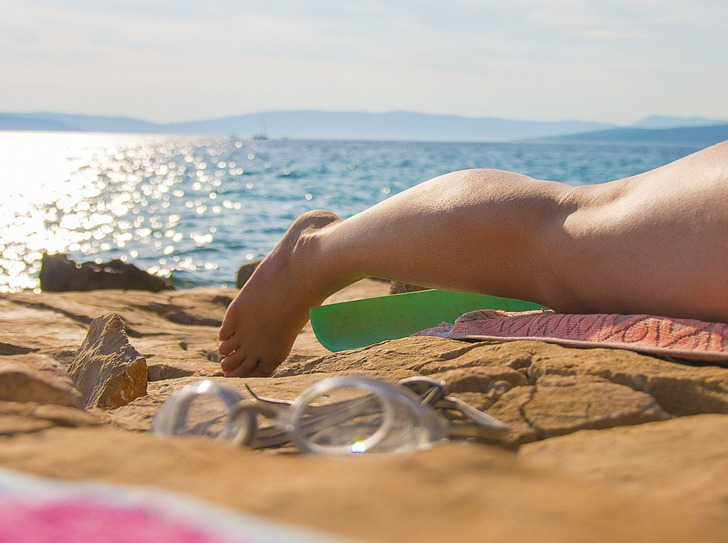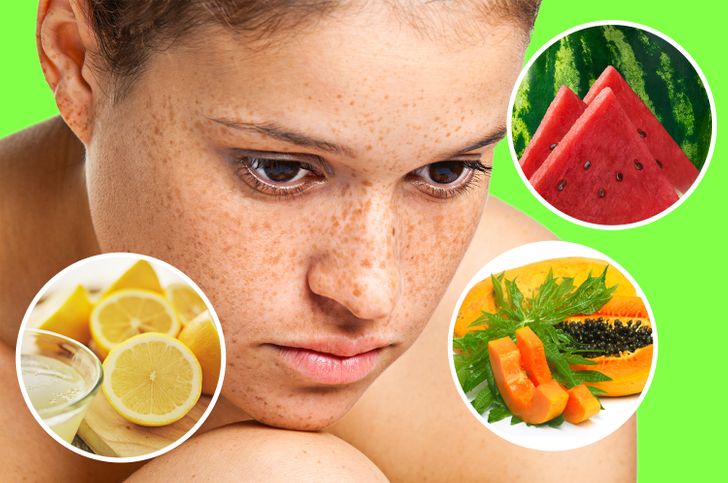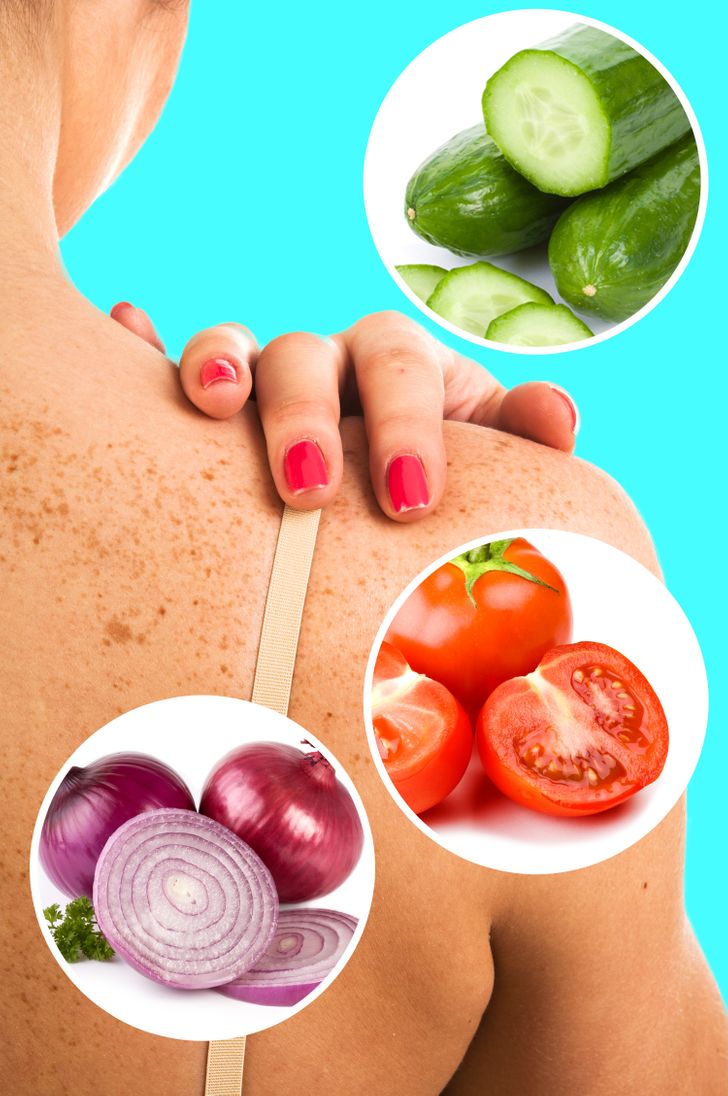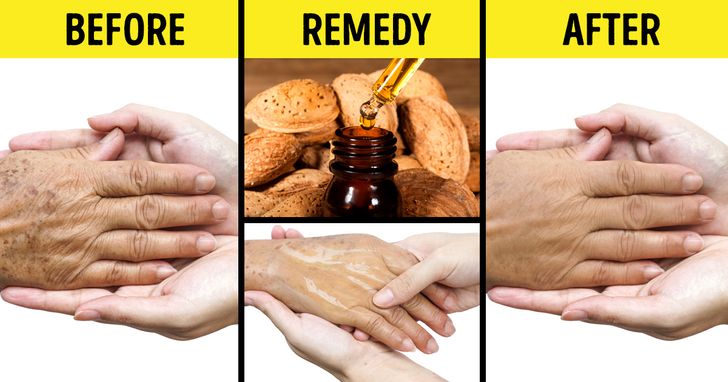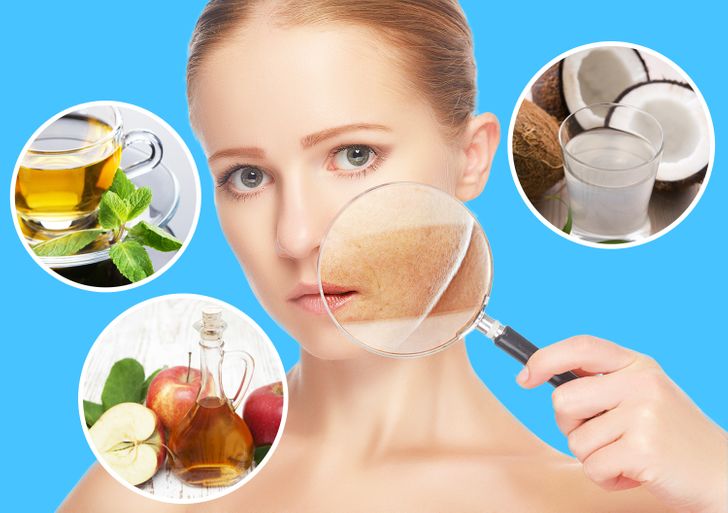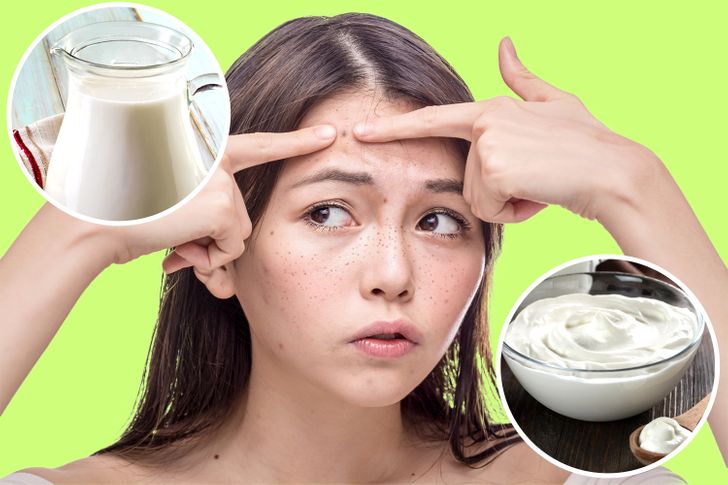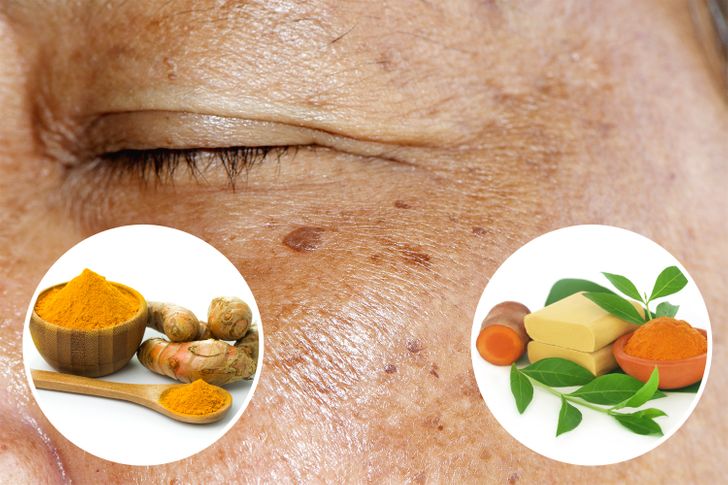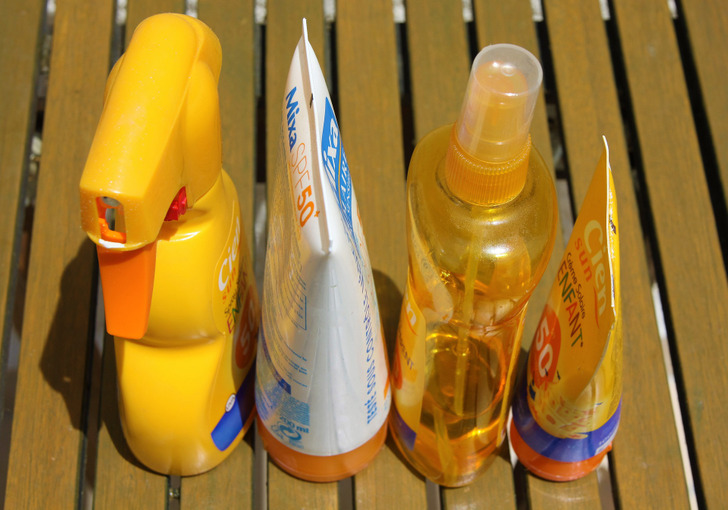I've been using Dermalmd lightening serum twice a day for only 2 weeks. But I can already see a difference in my sun spots. I have several on my face and have tried many other kinds of correctors even a $90 jar from the doctor and dermalmd is by far the best. Please don't hesitate to try it.
16 Tips for Removing Dark Spots From Sun on Face
Looking for natural remedies for dark sun spots? We have prepared 16 tips for you, based on the recommendations of dermatologists. They can also help you reduce your risk of skin cancer.
Your skin reacts to the sun.
Imagine you have an important event coming up, and you want to look all tanned in your new slip dress. You know the sun can get you that look you so much desire. We know if we expose ourselves into the sun for some minutes, our skin will change its color, even if it just a little. But not all of us know how that reaction occurs.
Our body produces melanin to help protect the skin from UV rays. That melanin is what causes a temporary change in your skin color. After some time, that pigment will fade away, because new cells emerge to the surface.
Dark spots can appear when UV rays cause an uneven production of melanin in your skin cells. The excess of pigment clumps up together, and it lets itself be seen between skin cells. As we know, some vitamin D provided by the sun, in moderate quantities, is actually good for your body. But remember that everything in excess can be a recipe for disaster, and getting rid of the consequences can take a lot of time.
Fruit
1. Lemon
- Why? It contains citric acid, which is a great bleaching agent. However, it can also cause a mild burn.
- How? Squeeze the juice from the lemon and apply it with a cotton pad. If you have extra-sensitive skin, make sure to dissolve the lemon juice in some water.
- How often? About 3-4 times a week. Pay close attention to how your skin feels and behaves, and reduce the number of applications if any irritation occurs.
2. Papaya
- Why? It has enzymes, which also have peeling properties (look for them in professional peelings too). Have a look at what enzymes are here.
- How? Grate or mash it and then apply this puree. Rinse with lukewarm water after 20 minutes.
- How often? It’s milder than lemon, so you can use in the morning and in the evening.
3. Watermelon
- Why? It’s rich in vitamins A, B, and C and good for many other reasons. This watery fruit (which is actually more of a berry) will not give you quick results, but is bound to help even out your skin tone after a while.
- How? Battle the desire to eat right away and apply some pulp on any area where you have spots caused by the sun. Rub it on and leave it for 20-30 minutes, after which you can wash it off.
- How often? It’s not going to provoke any damage, so applying it daily is fine. Persistence is key in this case.
Vegetables
4. Red onion
- Why? It’s naturally acidic and helps dark spots fade away.
- How? Prepare yourself for some odor. Mix one tbsp of red onion juice with 2 tbsp of honey. Put the excessive amount in the fridge. Apply to the dark spots, but try it first on your body before applying it to most sensitive areas like the under eyes and cheeks. Rinse well after 15 minutes to get rid of the odor.
- How often? Twice a week.
5. Tomato
- Why? Tomato is well-known for having a whitening effect on the skin. Korean beauty brands that are crazy about a porcelain-like complexion have whole lines of tomato-based products. They’re also considered a superfood.
- How? Consider buying a tomato whitening mask or use a fresh tomato by squeezing the juice. Or just put a thin little slice on the affected area and leave it for about 10 minutes.
- How often? 3-4 times a week.
6. Cucumber
- Why? It’s great for dry skin because of its moisturizing properties and for skin spots due to high amounts of vitamin С.
- How? Put 2 slices under your eyes for a cooling effect and to reducing dark circles. Mash another slice, mix it with glycerin, and apply to either the dark spots or to your whole face. Wash it off after 15 minutes.
- How often? Pamper yourself as often as you can get ahold of a good organic cucumber that’s too watery or too dry.
Oils
7. Sweet almond oil
- Why? Unlike red onions, sweet almond oil smells wonderful. It’s not very cheap, but it offers amazing properties like oleic and linoleic acids and vitamins A, B2, B6, D, and E. Plus, it’s non-greasy and is absorbed quickly.
- How? You can use it as a lotion and gently apply a couple of drops to your face and directly to the dark spots the sun caused. Do not wash it off.
- How often? Every night before bed.
8. Vitamin E
- Why? This is a wondrous thing that’s helpful for so many problems. You can use it to moisturize cuticles, add to treatments, take internally as a supplement, and apply to your skin as a lightening agent.
- How? It’s better in capsules since it’s easier to use one capsule at a time. Squeeze it onto your skin, spread it out, and don’t rinse if you apply it before bed. Go to sleep and let it do its magic!
- How often? As often as you want to — no harm will come.
9. Castor oil
- Why? It keeps the skin tone even and reduces the appearance of pigmented areas too. Plus, it’s a cheaper alternative.
- How? Rub gently where needed.
- How often? Apply it to your skin in the mornings and in the evenings.
Liquids
- Why? A wholesome product in itself, apple cider vinegar is also great for preventing dark spots. It contains alpha hydroxyl acids which work well against sun rays.
- How? Mix half a tsp of vinegar with one tsp of lemon juice (double power) to create a paste. Apply with a cotton pad and then wash off when it dries. If you want to use it as a mask, first try applying a small amount to your less sensitive area to see if any irritation occurs.
- How often? As a mask, once a week is enough. If you want to apply it locally on spots, it’s best to do so every other day.
11. Green tea
- Why? But why not? Its anti-inflammatory and antioxidant effects are good both in and out.
- How? The stronger you brew it, the better it is in this case. Apply with a cotton pad or just use a tea bag to pat (not rub) the skin.
- How often? The frequency is up to you. In general, it’s recommended to do this every other day.
12. Coconut water
- Why? Everyone knows that coconuts are a heavenly food, drink, and cosmetic product. They can be used for a great number of purposes. Speaking of skin, it will provide you with a light cooling and bleaching effect.
- How? Pretty simple. Apply, let dry, and then reapply.
- How often? As often as you wish. It’s a bit sticky, so wash it off if you want to use makeup or some other product afterward.
Dairy products
13. Buttermilk
- Why? Let’s begin with “what” this time. Buttermilk is what’s left after butter was churned out of the milk. It’s liquid, and it has lactic acid, which helps remove dead skin cells.
- How? Soak a cotton ball in it and put it on the dark spots. Leave it for 20 minutes and then rinse. But don’t apply it to sensitive areas because lactic acid can irritate them.
- How often? Daily.
14. Yogurt
- Why? As another dairy product, it has the same qualities as buttermilk. Though, it might be easier to find at a local store.
- How? Opt for natural yogurt with no additives. Use on the whole body if you have sunburns.
- How often? Depends on the area. A couple of times during the day to treat sunburned skin.
Spices
15. Turmeric
- Why? A cheerful, colorful spice with great antiseptic properties.
- How? Mix it with any of the oils above or honey to make a thick paste. Mixed with honey, it’s better for local usage, but it can be applied as a mask to your whole face if you mix it with oils.
- How often? 2 times a week.
16. Sandalwood
- Why? It eliminates hyperpigmentation effectively and also reduces dullness.
- How? Take a bit of sandalwood powder and mix it with some lemon juice and rose water or any other toner to create a paste. Such a consistency is very convenient to use. Apply, let dry, and then rinse. Another way is to mix the powder with olive oil or capsuled vitamin E in a 1:2 proportion. Leave it on overnight.
- How often? You can use it every night if mixed with oils until you see the result, or twice a week if mixed with lemon juice.
Think ahead of time and prevent dark spots from appearing on your skin.
If you don’t have dark spots in your face, you can try to prevent them from appearing with simple steps that you can implement to your daily routine. Remember that treating the problem can take a lot of time and money as well.
- SPF or Sun protection factor can help reflect UV rays away from your skin. That’s why many dermatologists recommend its daily use, it’s even better if you reapply it multiple times through the day. Look for a sunscreen that is SPF30+ or more, their effect will last a little bit longer, although you are still going to need to put it on your skin many times.
- If you know you are going to be under direct sunlight for long periods of time, wear clothes that cover your skin. A long sleeve shirt, pants and a hat will go a long way. Don’t forget to take care of your eyes as well, with your favorite sunglasses.
- In some parts of the world, between 10am and 4pm is when the sun rays hit the hardest. Avoid going into the sun during those hours, but if you must go out, try to stay in a shadow as long as you can. You can even carry a small umbrella in your purse.
Bonus
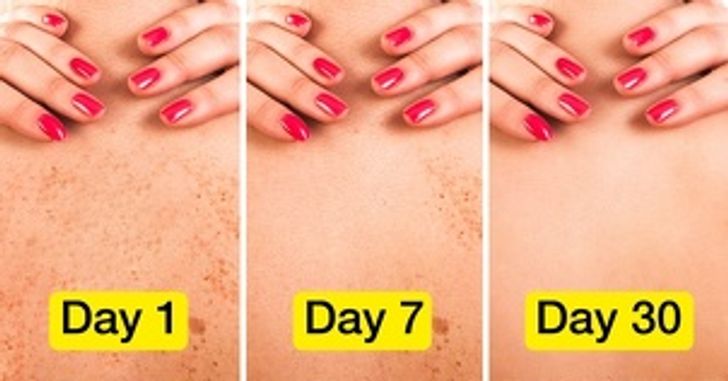
There are actually quite a few natural remedies you can try to reduce the redness and appearance of dark spots. We recommend that you try the ones mentioned above and see what works best for you personally. But please, be aware of the fact that self-treatment is highly recommended only after consulting a doctor.
Some sunspots can be a sign of skin diseases. So we also recommend seeking professional help if nothing works.
If you cannot use lemon and yogurt to help fight lentigines, hyperpigmentation, or red and dull skin, then consider the following:
- Chemical peeling: It will leave your skin bright red for a couple of days after the procedure, but it’s worth it.
- Microdermabrasion: It gently exfoliates dead skin cells and promotes a fresher and glowing look, and it boosts collagen production.
- Cryosurgery: It’s noninvasive, so don’t get scared of the name. The dark spots are frozen, and it turns white afterward. Then it develops a scab which falls off in a couple of days.
- Laser treatment: It’s quite effective, but has 2 drawbacks: first, you may require several sessions, and second, your skin will be extra sensitive for some time after that, so it’s highly recommended that you stay out of the sun.
We would be happy to know your stories about fighting sunspots and other skin problems! Please, share them in the comments. Perhaps your stories will help others who suffer from such issues!
Comments
Related Reads
17 Girls Who Now Shudder When They See a Nail Salon From Afar

15 Travelers Who Ended Up in a Story to Tell

18 Stories About Friends Who Turned Out to Be Hidden Villains
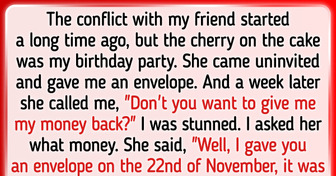
My Stepdaughter Begged Me to Take Her to the Hospital, but I Refused

I Welcomed My Best Friend Into My Home—She Destroyed My Family

I Can’t Believe What My Ex-Husband Asked Our Daughter to Do

14 Times a Cheating Partner Got Busted in the Most Abrupt Way

I Can’t Believe What My Fiancé Wants to Do With MY Inheritance

The 12 Hottest Summer Manicure Trends to Try This Season
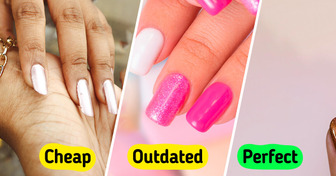
What Toxic Masculinity Is and Why Men and Their Loved Ones Suffer From It

11 Things Parents Did That Ruined Their Kids’ Trust Forever

20 Perfect Coincidences That You Couldn’t Make Up If You Tried
